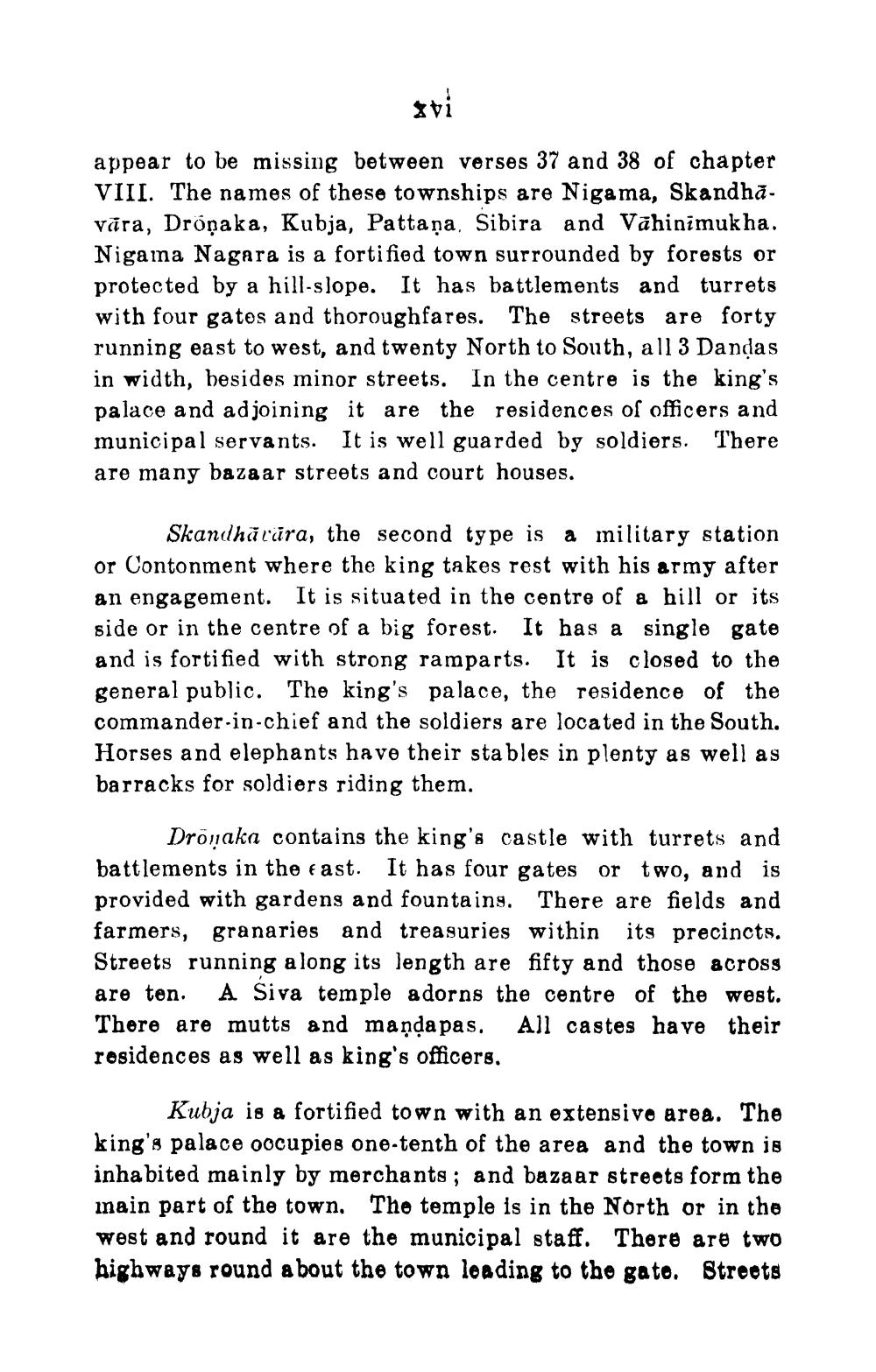________________
appear to be missing between verses 37 and 38 of chapter VIII. The names of these townships are Nigama, Skandhavāra, Droņaka, Kubja, Pattaņa, Sibira and Vāhinimukha. Nigamna Nagara is a fortified town surrounded by forests or protected by a hill-slope. It has battlements and turrets with four gatos and thoroughfares. The streets are forty running east to west, and twenty North to South, all 3 Dandas in width, besides minor streets. In the centre is the king's palace and adjoining it are the residences of officers and municipal servants. It is well guarded by soldiers. There are many bazaar streets and court houses.
Skandhalára, the second type is a military station or Contonment where the king takes rest with his army after an engagement. It is situated in the centre of a hill or its side or in the centre of a big forest. It has a single gate and is fortified with strong ramparts. It is closed to the general public. The king's palace, the residence of the commander-in-chief and the soldiers are located in the South. Horses and elephants have their stables in plenty as well as barracks for soldiers riding them.
Drönaka contains the king's castle with turrets and battlements in the east. It has four gates or two, and is provided with gardens and fountains. There are fields and farmers, granaries and treasuries within its precincts. Streets running along its length are fifty and those across are ton. A Siva temple adorns the centre of the west. There are mutts and maņda pas. All castes have their residences as well as king's officers.
Kubja is a fortified town with an extensive area. The king's palace occupies one-tenth of the area and the town is inhabited mainly by merchants; and bazaar streets form the main part of the town. The temple is in the North or in the west and round it are the municipal staff. There are two highways round a bout the town loading to the gato. Streets




